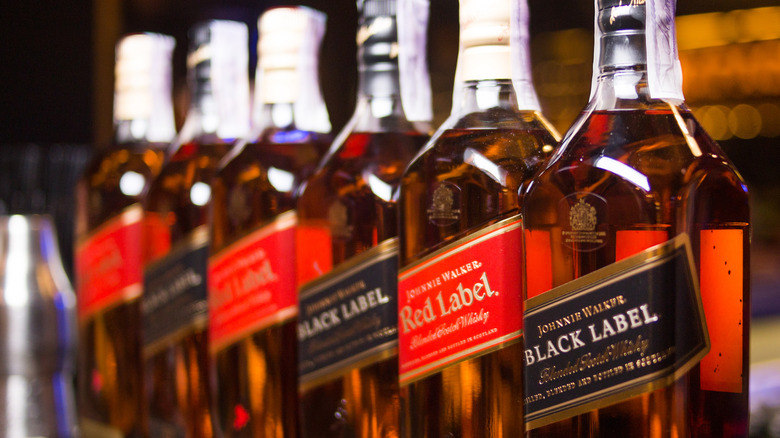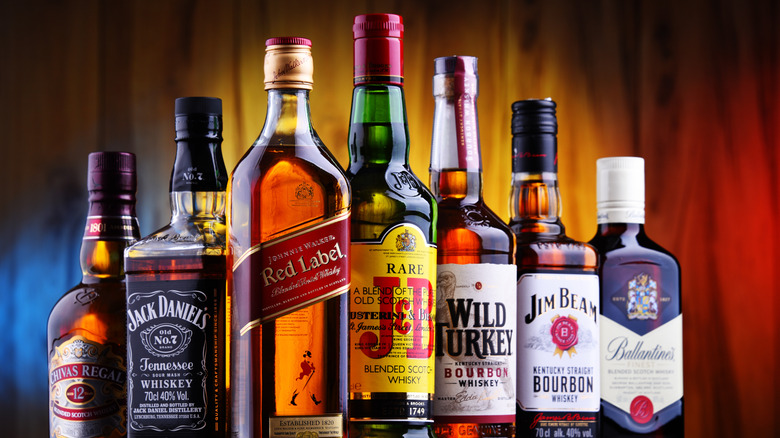The Real Reason Johnnie Walker Bottles Are Square
The last thing you are likely thinking about when that Johnnie Walker whisky slides smoothly across your tongue is the shape of the bottle it came in — but, it's worth giving it a second thought.
For starters, it's "whisky" — not "whiskey" when it comes to Johnnie Walker. Johnnie Walker was a Scot making Scottish whisky, hence the geographic vernacular difference. Per the company's website, Walker began his famous blended Scotch whisky brand in 1819, in the Scottish burgh of Kilmarnock. By the time he passed the business down to his son Alexander in 1857, whiskey fans worldwide were already becoming familiar with the Johnnie Walker name. And they continue to discover the brand, too, despite Johnnie Walker's global distribution today (it's available in more than 180 countries). In 2021, Johnnie Walker's parent company Diageo saw Scotch whisky sales increase by 15%, according to The Spirits Business.
Johnnie Walker whisky's signature, of course, is its square bottle. Alexander Walker was the first liquor purveyor to implement square bottles, and many other brands have since followed suit, creating their own square bottle design, including Evan Williams bourbon and Omeca Altos tequila. Why the change?
Cubes are stronger than cylinders
The onset of the Industrial Revolution innovated global trade on a platform yet unseen. Johnnie Walker's Kilmarnock received its first railway in 1811, per the BBC — eight years before the Johnnie Walker brand debuted. As the company and customer demand grew, the railway allowed for the distribution of the Scotch whisky with rapidly increasing efficiency and volume. Via Thrillist, Alexander Walker rolled out the famous square bottle a few decades later, in 1860, to reduce bottle breakages during transport, ensuring the product was delivered safely to customers.
The cube-shaped bottles provide a signature aesthetic for the Black Label brand, but the genius of their square structural design cannot be overlooked. According to the geometry experts at Structural Guide, cubes and cylinders have a characteristic strength ratio of 15:12, respectively, which means cubes are 125% stronger.
The difference is substantial. Engineers David J. Elwell and Gongkang Fu conducted an experiment for the New York State Department of Transportation to test the strength of cylinders versus cubes. Granted, the material they were working with was concrete instead of glass, but the geometric idiosyncrasies of the two shapes are universal across mediums. In their study, they found that less material is required to shape cubes than cylinders; as a result, cubes weigh 36% less per unit. The lighter weight and lesser cost of bottling materials is marginally more efficient.

